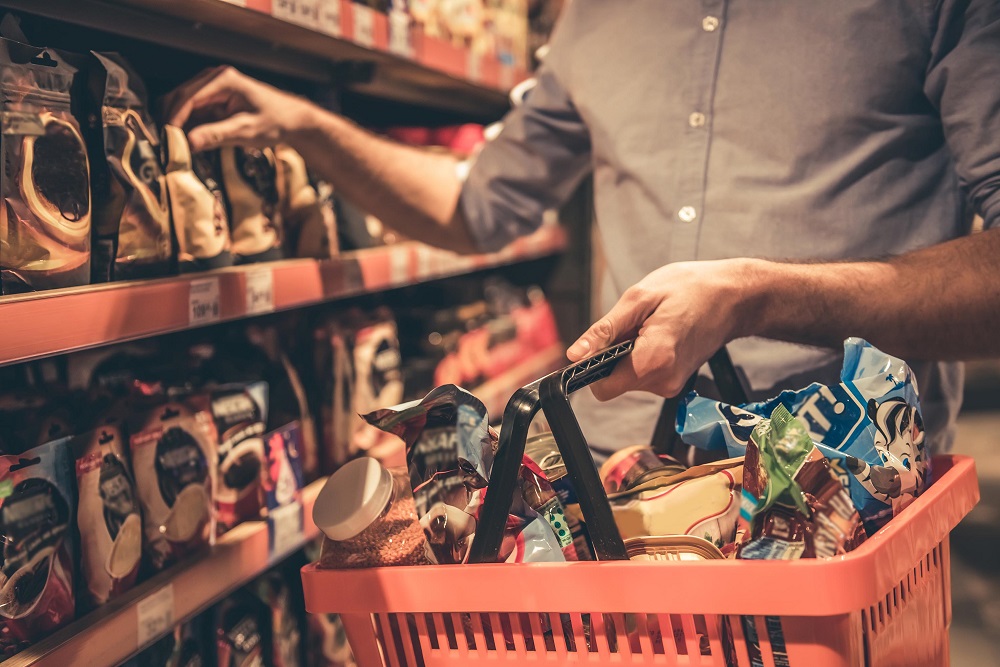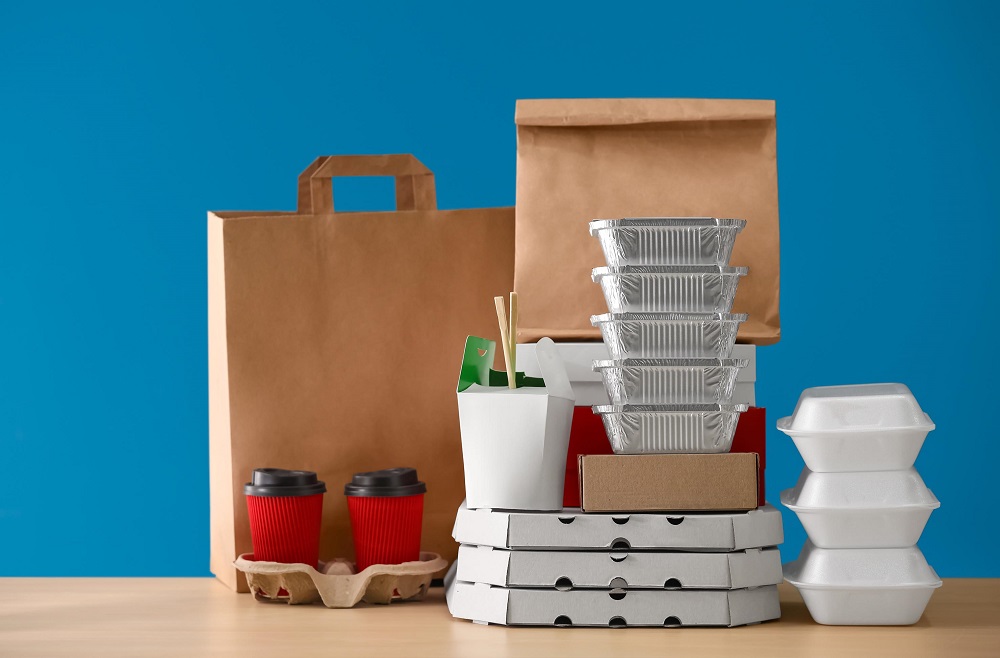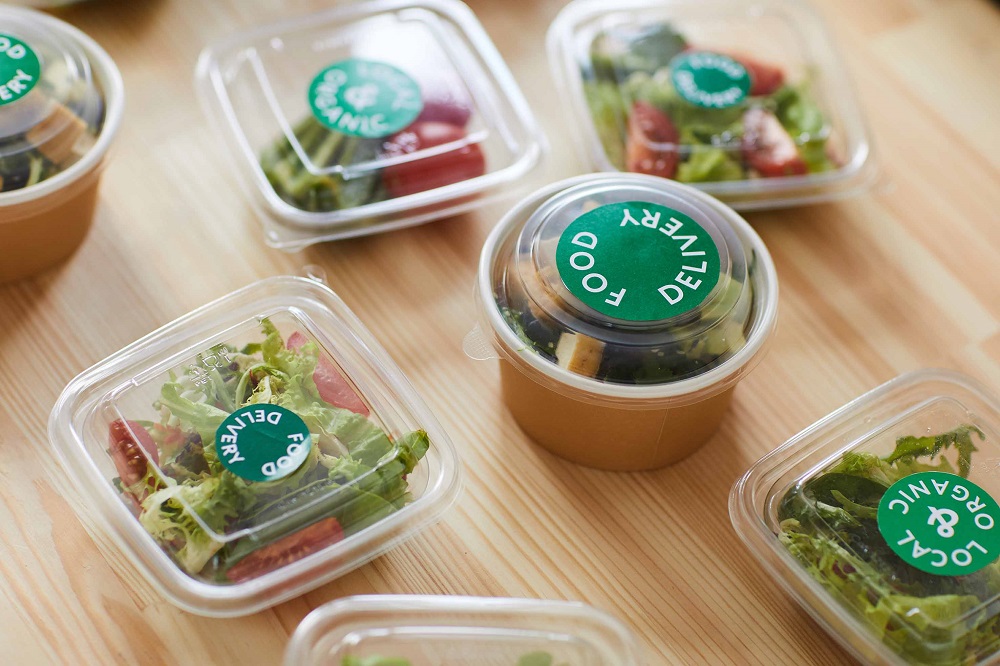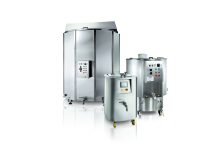 Increased use of compostable or biodegradable bioplastics, use of paper and cardboard, recyclable plastics and reduction in the volume and weight of packaging appear to be the trends to be followed for new food packaging materials. All under the banner of the 4Rs – reduction, reuse, recovery and recycling.
Increased use of compostable or biodegradable bioplastics, use of paper and cardboard, recyclable plastics and reduction in the volume and weight of packaging appear to be the trends to be followed for new food packaging materials. All under the banner of the 4Rs – reduction, reuse, recovery and recycling.
The search for new packaging materials is oriented towards the use of raw materials of natural and renewable origin and towards the production of innovative biodegradable and, in some cases, compostable materials.
Ecological Packaging
Italian consumers are increasingly attentive to the protection of the environment. This is also confirmed by the research carried out by Nomisma’s Large Consumption Packaging Observatory, according to which, during 2020, 33% of respondents saw the environment play an increasing role in their everyday choices and 27% have always considered the ecosystem a priority. Consumers in the future will be more likely to buy products with less packaging or using sustainable packaging.
The main function of packaging seems to be to help define the sustainability of the product, alongside the more traditional ones of preserving and protecting the organoleptic characteristics of food, or of communication, storage and transport. Changing lifestyles and consumption habits is the focus of consumers’ efforts, who are sensitive to the call for sustainable solutions, even in the packaging of food products.
The ecological packaging is a strategic choice adopted by several food processing firms, of great interest also for consumers. It is not only a matter of choosing recyclable, biodegradable, environmentally friendly materials, but also designs that allow a container to be recycled after its end of life, thus also reducing weight and volume. Eco-friendly packaging cannot ignore the 4Rs criterion, i. e. reduce, recharge, recover and recycle.
The new materials aim at the absence or reduction of plastic, partially or completely replaced by biodegradable materials. The companies’ efforts are focused on ensuring the same aesthetic and technological results as standard materials. Among the increasingly used materials are bioplastics, which are derived from renewable raw materials of plant origin, such as starch, cellulose, potatoes, organic waste etc.
The role of paper between the new and the old packaging
Do not think that the ecological materials are only those that are biodegradable or from natural and renewable sources. There are materials that have been widely used in the food industry for a long time, perfectly in line with the ecological needs of companies and consumers. Examples include poly-coated cardboard for milk and juice, as well as aluminium, which can be recycled several times.
The latter is also practical, hygienic, easily machined to give it different shapes and personalized through digital printing, in line with the marketing strategies of the companies. It is the paper industry, however, that plays an increasingly strategic role on the market for new materials, thanks to the availability in nature of cellulose, which is essential for the production of packaging with low environmental impact that is easy to recycle. In addition, paper is the basic material on which bioplastic films can be applied for its waterproofing.
For example, the Finnish-Swedish company Stora Enso uses micro-fibrillated cellulose to improve the performance of cardboard in packaging, especially for milk packaging in co-operation with Elopak. As an alternative to plastic and laminate films, on the market there are recyclable barrier papers because they are obtained from renewable resources. These new materials ensure mechanical properties, such as puncture resistance. They are also weldable and printable, and can provide a good barrier effect against grease and water vapour.
They can be used for the packaging of dried and frozen food, bakery products, dry pasta, sweets, fresh fruit and vegetables, but also as secondary packaging. To improve the barrier effect, small amounts of plastic can be added to some types of papers. Paper is increasingly replacing plastic in the fruit and vegetable sector, too. Many food companies choose 100% recyclable paper trays, without the need for plastic or films.

These cellulose-based packaging materials can be recovered with paper and can replace plastic trays and the plastic film used for closing. Made of sugar-cane paper and polymer is the new Tetra Stelo plant-based packaging, 100% recyclable and made up to 87% of renewable sources. The packaging, designed by Tetra Pack in co-operation with Granarolo, is made of FSC® certified paper, sourced from responsibly managed forests and other controlled sources, and a polymer obtained from sugar-cane for the components of the cap, the neck of the cap and two of the packaging coatings.
The new packaging has lower CO2 emissions but the same performance as the corresponding petroleum polyethylene. The study “New patterns of consumption and the redesign of packaging: The choice of sustainable materials in the era of the circular economy”, carried out by the Management Institute of the Scuola Superiore Sant’Anna, analyzed the industrial solutions that the paper industry is developing to design and manufacture packaging systems that can at the same time meet the needs of sustainability, innovation and functionality with the aim of facilitating collection and recycling.
One of the frontiers of innovation explored by the study is the use of new materials for packaging, where paper and cardboard play a central role: From bio-based materials of animal origin, plant origin and bioplastics to nanomaterials, i. e. all materials whose main components are between 1 and 100 billionths of a metre in size. Among the nanomaterials, nanocellulose stands out. The tendency of cellulose nanoparticles to self-assemble largely determines the intrinsic resistance of the material.
Depending on how nanocellulose is produced, it can be classified into three families: Cellulose nanocrystals (NCCs) and cellulose nanofibrils (NFCs), both obtained by a “top-down” approach, i. e. by breaking the membrane of plant cells to release nanofibrils and nanocrystals from cellulose fibres; and bacterial nanocellulose (BNC), produced by bacterial synthesis as pure and highly crystalline microfibrils using a “bottom-up” approach, i. e. by creating cellulose polymers from glucose monomeric units. Nanocellulose has unique properties such as low density, high strength, lightness, stiffness and low cost. The nanocellulose consists of biomass, is renewable, biodegradable and compostable.

Bio-based materials
Among the new bio-based materials there is Shrink, a 100% biodegradable and compostable food film derived from chitosan, a natural substance derived from chitin, a polymer that protects crustaceans and insects giving hardness and resistance to shells and armour, combined with a silk protein called fibroin. This material, developed by the Wyss Institute of Harvard University, is very similar to plastic in strength and texture but is completely natural. In particular, it shows a 67-73% reduction of the oxygen permeability compared to some types of PET, keeping food fresher and longer.
Biocopac Plus, born as part of the Life Project, is a new material based on cutin, a substance extracted from the rejects of tomato peel, used for the coating of tinned food cans, instead of Bisphenol A. Plant-based are also the new materials used mainly for the production of disposable products, born to replace plastic in the food sector and in particular: Cellulose pulp, made from the residual fibres of certain plants, in particular bamboo; bagasse from sugar cane processing waste; and palm leaves harvested after spontaneously falling off.
A novelty on the market could be an eco-friendly food film, the Italian Beeopak, made with GOTS (Global Organic Textile Standard) certified cotton and beeswax, which gives it breathable and antibacterial properties. The film promises to be washable, reusable and last up to a year. The adhesive properties of the film are due to the pine resin which, together with the IGP hazelnut oil, makes the film mouldable and adaptable.
Less waste and more sustainability
Sustainable packaging is also what allows to use the entire product without waste and to reduce the use of plastic, such as flow packs made of single material or natural raw materials. Moreover, for the same volume, the production of a flow-pack uses at least 70% less plastic than a conventional rigid bottle. Less weight also involves less energy for production, transport and disposal, as well as lower carbon dioxide emissions.
It is also sustainable to opt for single-material packaging, such as polyethylene, to reduce the use of other types of plastics by reducing carbon dioxide emissions, as well as the use of recycled raw materials. When it is not possible to completely eliminate plastic, the current trend is to optimise the way packaging is collected and recycled.
Companies strive to produce single-material packaging or, alternatively, multi-layer plastic materials, which are separated into individual layers by enzymes to be recyclable. Some companies are going further, deciding to switch from recyclable packaging to those made from renewable sources, giving a further boost to the sustainable policy they have decided to pursue.
Biorepack, the new consortium of the CONAI system
Biorepack is the National Consortium for the organic recycling of biodegradable and compostable plastic packaging. The consortium is part of the CONAI system for the end-of-life management of biodegradable and compostable plastic packaging obtained from organic waste collection and transformed into compost.
The statute of Biorepack was approved by decree of 16 October 2020 (G.U. Serie Generale n. 284 of 14.11.2020) of the Minister for the Environment and Protection of the Territory And the Sea, in agreement with the Minister of Economic Development. Manufacturers and importers of biodegradable and compostable plastic packaging materials and manufacturers and processors of biodegradable and compostable plastic packaging and/or their semi-finished products, including importers of empty biodegradable and compostable plastic packaging and/or their semi-finished products, are members of Biorepack.
Merchants, distributors, fillers, users, importers of biodegradable and compostable plastic filled packaging and those who use or supply packaging to their customers in the course of their business are also eligible to join voluntarily. In addition, recyclers and companies that treat biodegradable and compostable plastic packaging at the end of life with the organic fraction of municipal waste.



